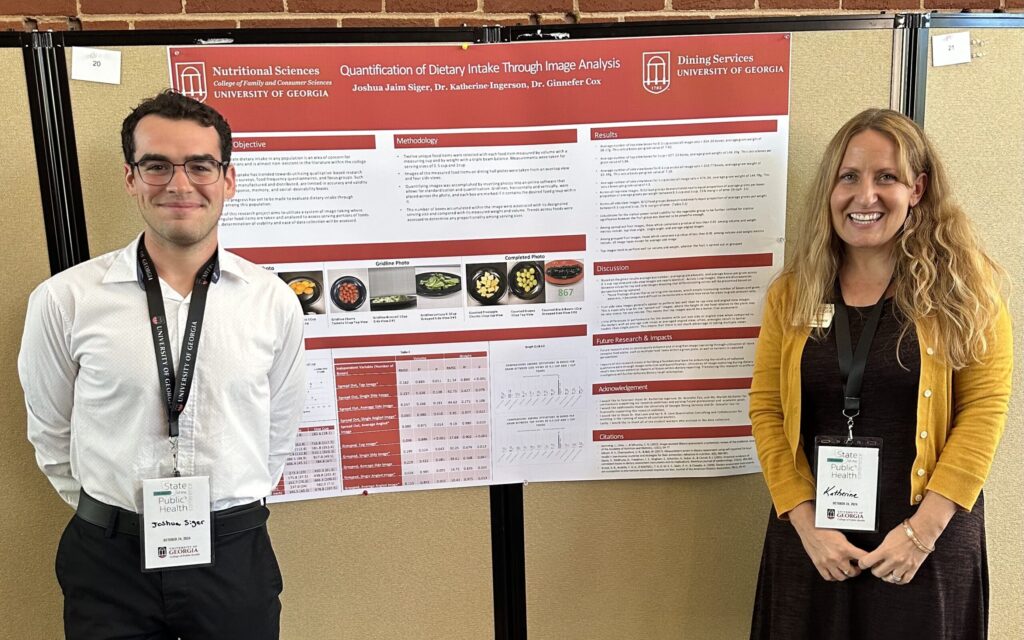
(left-right) Joshua Siger and Katherine Ingerson, UGA Dining Associate Director of Nutrition Services, at the 13th Annual Georgia State of Public Health Conference.
Former Dining Services Student Nutrition Manager and current Nutritional Sciences Masters student, Joshua Siger, presented his research poster at both the Center for Undergraduate Research Opportunity (CURO) Symposium in April of 2024 and the 13th Annual Georgia State of Public Health Conference (SOPH) in October of 2024.
His poster focused on quantifying dietary intake and research conducted on students’ plates in the dining commons.
1. What is the benefit of your nutrition research?
“Within the scope of nutrition, dietary recalls are notoriously influenced by numerous biases including social, recall, conformity, and more. Being able to alleviate these barriers in order to determine true dietary habits may allow for dietitians and health professionals to better assess individuals’ health outcomes and detect early nutrition related illnesses.
“My research aimed to build a foundational framework for validating dietary recalls through image capturing and quantitative recall. This would allow us to better calculate true amounts of food being consumed when recalling one’s eating habits.”
2. Why did you pick this topic?
“I had worked previously with Dr. Katherine Ingerson researching a similar system to accurately detect measurements of food within a given plate within the UGA dining halls. I wanted to take this method and see if [it] could be achieved at a foundational level for dietary recalls.”
3. How does your research impact UGA students on the meal plan?
“This impacts students on the meal plan by allowing our UGA staff Dietitians to better understand students’ eating habits and address students’ nutrition concerns.”
Joshua’s research lays the foundation for a potential tool to help individuals accurately report dietary intake and eating habits. This knowledge can then be applied to large population settings such as schools, retirement facilities, and other large communities where it is otherwise difficult to estimate dietary intake.
Health professionals can use this information to better plan menus, assess nutrient intake, and strive to improve nutrition intake through menu planning and choice architecture.

